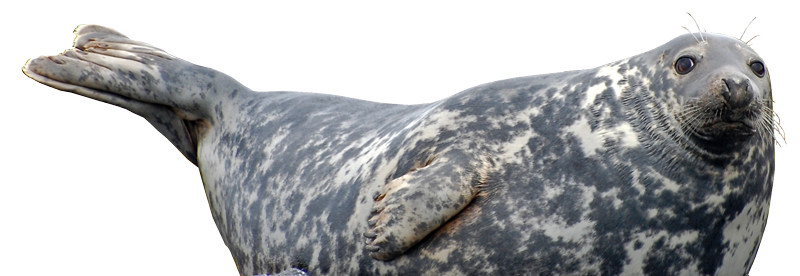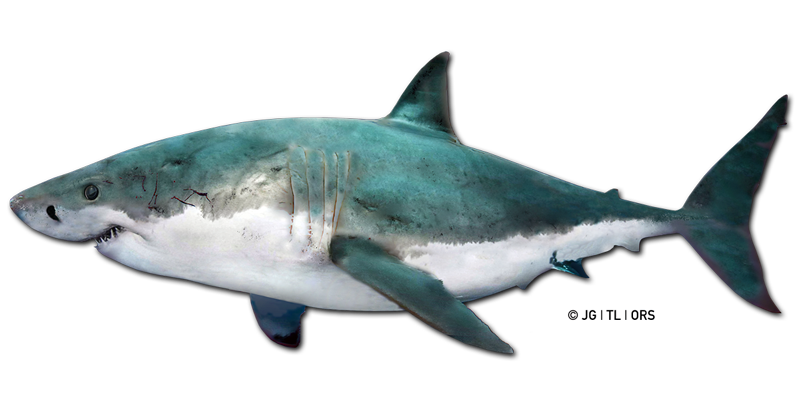| Description: A white shark attacked and tipped a fishing boat after being harpooned at Slaunwhite’s Ledge. One of the two occupants of the boat was flung overboard but otherwise uninjured. The shark species was identified from the illustration of a tooth found embedded in the boat.
From Harry Piers (1933):
On 27th June, 1920, a shark, believed to be fifteen feet long, attacked the boat of Jeremiah Harnish and John Chandler of Hubbards while they were harpooning albacore (T. thynnus or secundodorsalis) about half a mile south-southeast of the bell-buoy off Slaunwhite’s Ledge, just outside and east of the entrance into Hubbard Cove, in the northwest part of St. Margaret Bay, Halifax County (lat. 44°36’31” and long. 64°02′); and in so doing left a tooth in the boat. The day was a fine, warm one, with a south-southwest wind. While Harnish, Chandler and another man, Walter Winters, were out in their motor-boat, Harnish, standing on the projecting “pulpit” at the bow, harpooned what he supposed was a large albacore. After the fish was struck, he and Chandler, as was the custom, got into their towed rowboat for the purpose of “drowning” the fish by letting it run with a buoyed line so that it would play itself out. An albacore dives deeply when harpooned, but this fish kept only a little beneath the surface and did not attempt to run away. About ten minutes after having been struck, it came to the surface, and when only fifteen feet away suddenly made a savage rush at the after part of the boat where Chandler was standing. The resultant impact was so great that the man was thrown overboard. The thoroughly enraged fish bit at the boat with its large powerful jaws, and left scars and cuts in the wood which were afterwards plainly seen; the spread of the jaws being about twenty-five inches. Where the upper jaw struck, just below the gunwale, was left embedded one tooth which is said to have been as bright as ivory, as long as a man’s little finger, and like the teeth of a saw on both sides. The cut in the upper part of the boat, where the tooth came into contact with the wood, was about six inches long and three-quarters of an inch deep; which is indicative of the great strength of the animal’s jaws. Fortunately the fish did not turn its attention to Chandler, who being a good swimmer soon reached the boat which was fifteen feet away, and was safely pulled in by his astonished companion. They had quite enough of the unexpected adventure and lost no time in cutting the harpoon-line so as to let the dangerous fish go; and it thereupon went off with the embedded harpoon-point and about six fathoms of the attached small rope. Winters, who was operating the motor-boat and had witnessed this affair which might have ended fatally, came alongside, took aboard the two dismayed men, and they hurried back to Hubbards, thankful for their fortunate escape. When at Hubbards three weeks later, I endeavoured to obtain the tooth for careful examination, but found that in the meantime it had been accidentally dropped over the side at a wharf when being handed from one person to another for inspection. Mr. Harnish’s son has sent me a sketch of it, drawn from memory, from which we learn that it was regularly triangular in form, about 1.75 inch high and about 1.50 inch wide at the base, and both edges were distinctly serrated throughout their length. The fierce attack of the shark, though in this case a provoked one, and the serrated edges of its large triangular tooth, as well as the reported large size of the fish, seem clearly to indicate that it was a dreaded man-eater (C. carcharias).
Assessment: We concur with the original assessment of this incident by Spiers (1933). The behaviour and physical description of the shark, as well as the location, time of year, and circumstances of the incident leave little room for doubt.
 Click here for boater recommendations. Click here for boater recommendations.
|












